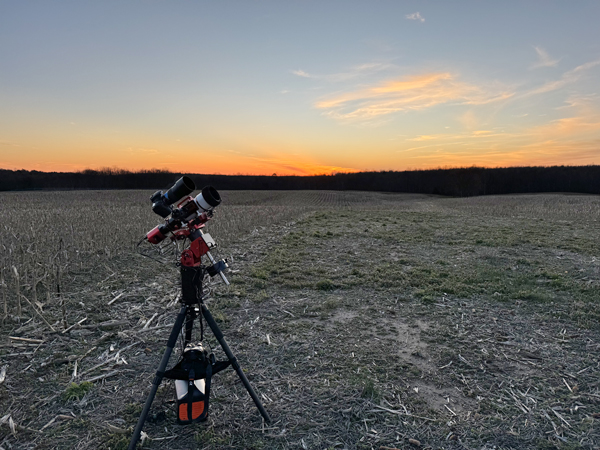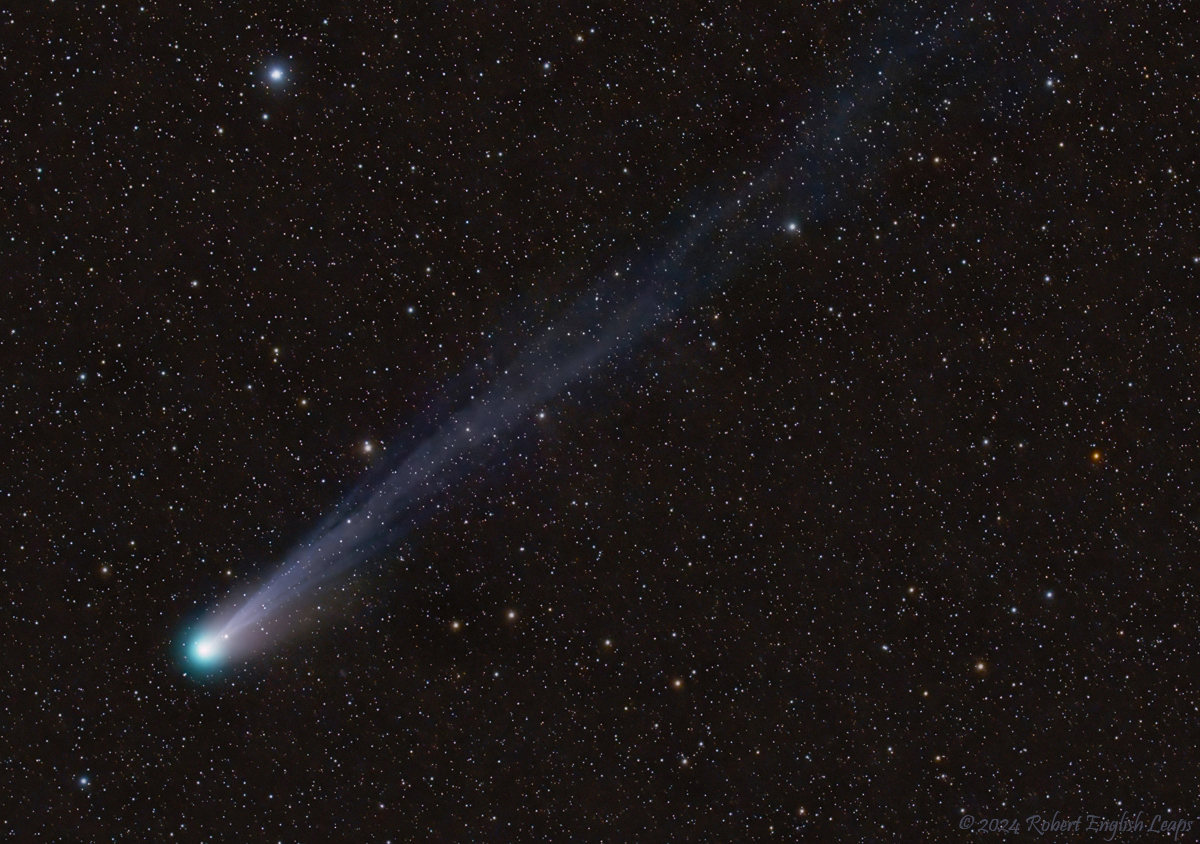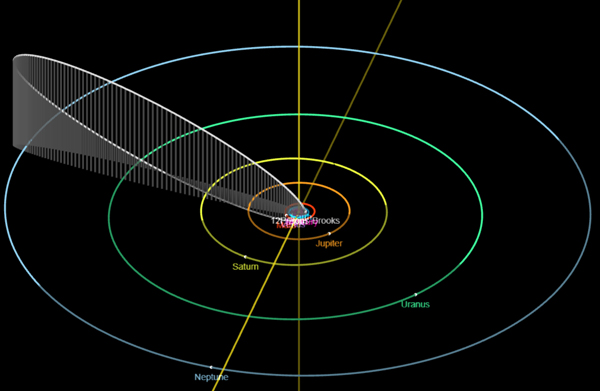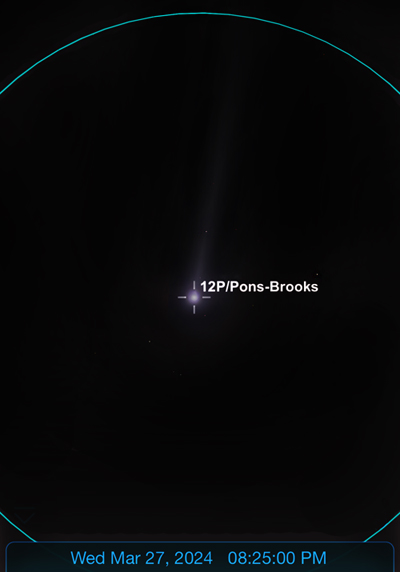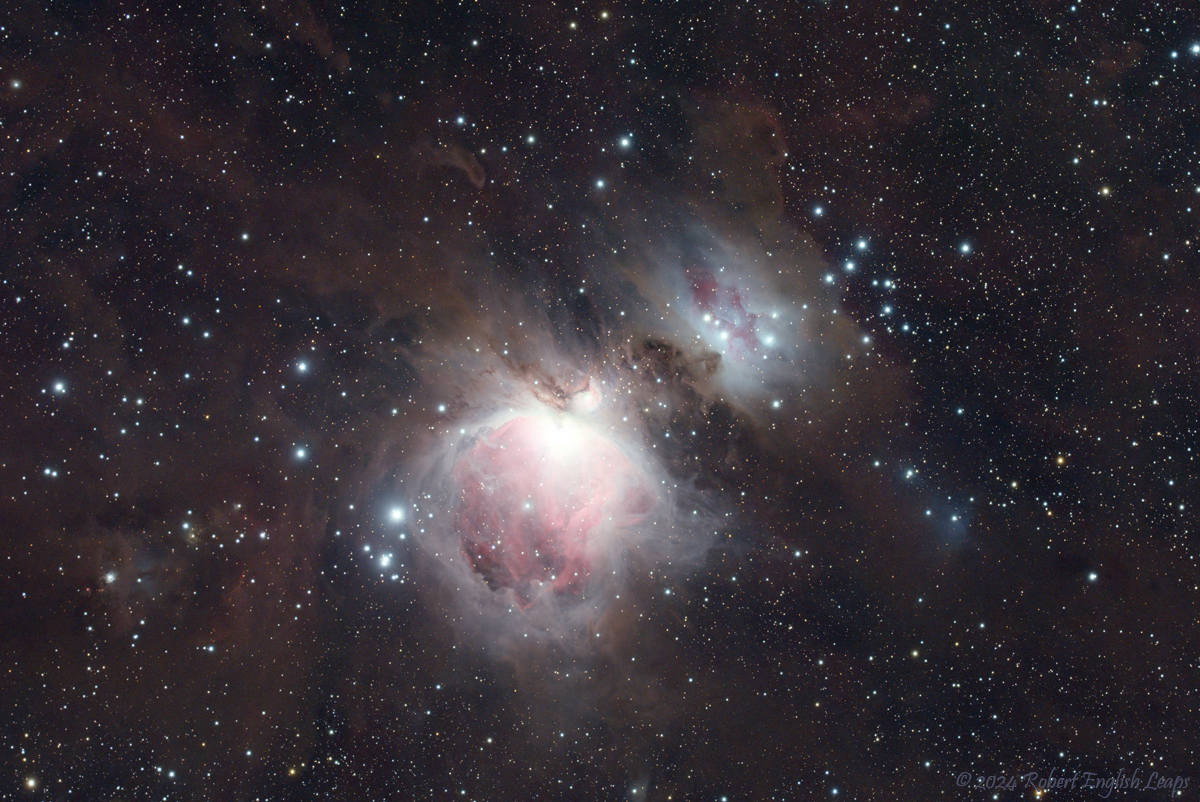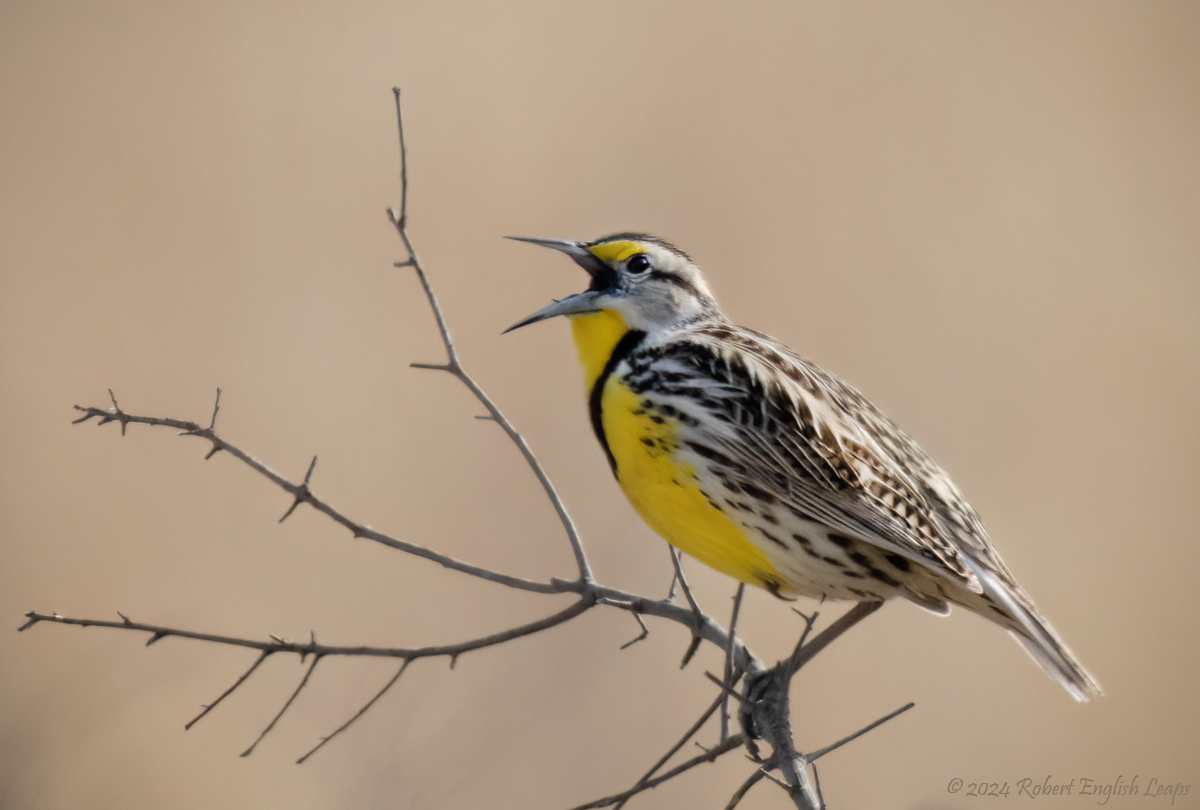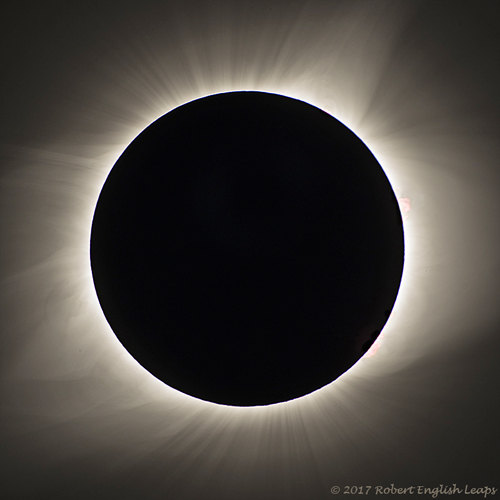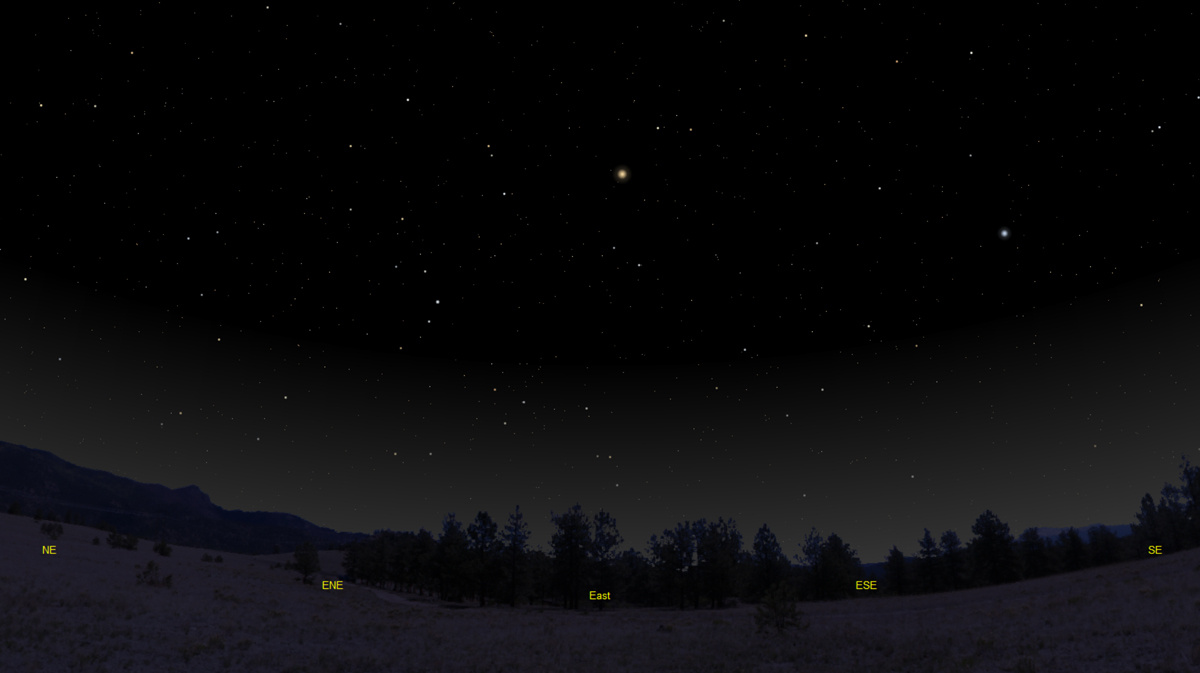The purpose of this feature is to give scout leaders, educators and naturalists an idea of some of the natural events coming up each month. We will try to cover a variety of natural events ranging from sky events to calling periods of amphibians, bird and mammal watching tips, prominent wildflowers and anything else that comes to mind. We will also note prominent constellations appearing over the eastern horizon at mid-evening each month for our area for those who would like to learn the constellations. If you have suggestions for other types of natural information you would like to see added to this calendar, let us know! Though we link book references to nationwide sources, we encourage you to support your local book store whenever possible.
Notes From March 2024
The family who owns the property I live on has been very gracious to me over the years, allowing me to place an observatory in an ideal spot and, when the planting season allows, use other good vantage points from the 500-plus acres that they have on Lookout Mountain. I chose a hill on the farm that had a low northwest horizon to try for the comet. On March 2nd my attempts at photography were soundly defeated by wind gusts and my own klutzy mistakes. It was still a beautiful night though. I saw and heard a Short-eared Owl giving its raspy barking calls. My location also gave me a very low south horizon, and I saw the bright star Canopus hovering just over the horizon. Canopus is the second brightest star in the sky, being outshone only by Sirius. I tried again on March 10th. As shown in the image above, clouds started moving in from the west at dusk, and I thought for a while that I would not be able to get an image. But ultimately the sky cleared in the northwest and I was able to get about thirty minutes of images before the clouds returned. Though the nucleus was only dimly visible in binoculars visually, the camera was able to reveal some details in the head of the comet, along with a short dust tail and a long ion tail.
The green glow in the comet's head is a result of solar radiation causing cyanogen and diatomic carbon to fluoresce. The yellowish dust tail of the comet is quite short and bends downward in the image. The long blue ion tails of comets always point directly away from the Sun. A finder chart showing the above image location and orientation is here. An annotated image showing myriads of faint PGC Catalog background galaxies is here.
The orbital path is shown at right in white, with the outer blue ellipse showing the orbit of Neptune. Farther investigation into the orbit of the comet and historical accounts of comet apparitions show that it most probably was observed in 1385 and in 1457. Since Brooks rediscovered it in 1883, the comet has returned in 1954 and in 2024 for its current apparition. In some respects comets have fallen in stature from their 17th and 18th century heyday, when (before automated photographic discovery) visual observers often earned prize money for their discoveries. The French comet hunter Charles Messier created his famous Messier Catalog of "objects to avoid" when he chanced upon the Crab Nebula and was disappointed it was not a comet. Messier said, "This nebula had such a resemblance to a comet, in its form and brightness, that I endeavored to find others, so that astronomers would not confuse these same nebulae with comets just beginning to shine." Unknown to him, his 110-object catalog contains many of the most spectacular nebula, star clusters and galaxies in the sky. As late as the 19th century Nashville's legendary astronomer Edward Emerson Barnard built a house for himself and his wife using the money he received for discovering five comets. Comet Pons-Brooks was definitely a challenge. The combination of its faintness, the necessity to shoot very close to the horizon through a lot of atmosphere, and the brief amount of time available before it set all contributed to the difficulty of getting a good image.
Using binoculars and the Sky Safari app we found the comet near the bright star Hamal in Aries. The comet nucleus was quite a bit brighter than it was on March 10th, but it still was not visible without binoculars. However, using binoculars, we were able to make out the ion tail of the comet extending upward from the nucleus for about two degrees. It was faint, but not hard to see. The illustration at right shows our binocular view of the comet. There was a faint star not far from the comet's nucleus that was right in the path of the tail, and that made it easy to determine the exact angle it appeared relative to the horizon. Comets are fascinating in that the details change from night to night as the solar wind buffets their tails. Whether you are observing them visually or through photography, you can see them change their position relative to the star field even in the course of one evening.
After Comet Pons-Brooks set on March 10th, I decided to relax a little bit and take an image where I wasn't racing the clock. One of the nice things about setting up a mostly automated telescope is that, once you are set up, it takes very little effort to do further imaging. To the south, Orion was still free of clouds. I chose the Orion Nebula as a target and entered the number of images that I wanted to take. The telescope then slewed to the nebula, centered the nebula, started guiding, refocused and began the image run, all by itself. That left me free to enjoy the sky visually and listen to the chorus of Southern Leopard Frogs, Spring Peepers and American Toads calling from the pond below.
The sky was very clear around Orion and a lot of faint nebulosity is visible in the image. To see the nebulosity better the stars have been removed in the image below.
The brightest parts of the nebula can be seen with binoculars. Don't expect to see color. The light is too faint to trigger the color cells of our eyes except in very large telescopes. Given a clear moonless night, the area appears as a misty spot to the naked eye. A finder chart showing the image area and orientation can be found here, and an annotated image can be found here.
The spring migration of birds is underway, with new arrivals showing up just about every day. Year-round residents like the Eastern Meadowlark in the image below are singing more now. We photographed this one on March 22nd near Eagleville, Tennessee.
.We recorded this Louisiana Waterthrush, a neotropical migrant, on March 23rd.
Sky Events for April 2024:
The Lyrid Meteor Shower peaks in the evening hours of April 21st and the morning hours of April 22nd, but a waxing gibbous Moon will tend to wash out the display. Comet 12P/Pons-Brooks is still brightening but also getting closer to the setting Sun. It still may reach naked eye visibility but chances are you will need binoculars to pick out the nucleus from the twilight glow. Still, it's worth a check if you get a clear sky and have access to a low western horizon. With binoculars we were able to see about 2 degrees of its ion tail on March 27th. Start looking about 30 minutes after sunset and observe till astronomical twilight, now about 1-1/2 hours after sunset. At the beginning of the month, find bright Jupiter and then offset your binoculars about two field of views to the right and one field of view down. A finder chart is available here. Evening Sky: Jupiter remains in Aries this month. At the beginning of the month look for it at dusk due west about 26 degrees above the horizon. It will slowly disappear into the twilight sky during the course of the month.
Morning Sky:
Venus rises about 30 minutes before
sunrise and may be visible low on the eastern horizon at the beginning
of the month.
Mars rises higher into the morning sky
as the month goes on. Look for it about 30 to 40 minutes before sunrise.
Look for Saturn below and to the left
of Mars. The two planets will appear closer and closer together each
morning until the April 10th, when they will only be separated by about
a half a degree. Saturn will then pass Mars and the apparent
distance separating the two planets will increase. On April 6th the two
planets will form a pretty triangle with the waning crescent Moon. Mars
will be within a tenth of a degree from
Neptune on April 29th.
As spring progresses and Hercules rises higher in the sky, look for the globular cluster Messier 13, which appears like a small fuzzy patch of light about 1/3 of the distance from Eta to Zeta Hercules (see the chart below). A cluster of stars about 21,000 light years away, M13 can be made out with the naked eye in a dark country sky when the constellation is high in the sky. Binoculars will help pick it out. In small telescopes you can make out some stars around the edges of the cluster. It's a beautiful sight in a large telescope, and you can see a small shadowy three-sided feature (about the 4:00 o'clock position in the image above) nicknamed "the propeller." On Learning the Constellations: We advise learning a few constellations each month, and then following them through the seasons. Once you associate a particular constellation coming over the eastern horizon at a certain time of year, you may start thinking about it like an old friend, looking forward to its arrival each season. The stars in the evening scene above, for instance, will always be in the same place relative to the horizon at the same time and date each April. Of course, the planets do move slowly through the constellations, but with practice you will learn to identify them from their appearance. In particular, learn the brightest stars (Like Arcturus and Spica in the above scene looking east), for they will guide you to the fainter stars. Once you can locate the more prominent constellations, you can "branch out" to other constellations around them. It may take you a little while to get a sense of scale, to translate what you see on the computer screen or what you see on the page of a book to what you see in the sky. Look for patterns, like the stars that make up the constellation Corona Borealis. The earth's rotation causes the constellations to appear to move across the sky just as the sun and the moon appear to do. If you go outside earlier than the time shown on the charts, the constellations will be lower to the eastern horizon. If you observe later, they will have climbed higher. As each season progresses, the earth's motion around the sun causes the constellations to appear a little farther towards the west each night for any given time of night. If you want to see where the constellations in the above figures will be on May 15th at 10:15pm, you can stay up till 12:15am on the April 16th and get a preview. The westward motion of the constellations is equivalent to two hours per month. Recommended: Sky & Telescope's Pocket Star Atlas is beautiful, compact star atlas. A good book to learn the constellations is Patterns in the Sky, by Hewitt-White. For sky watching tips, an inexpensive good guide is Secrets of Stargazing, by Becky Ramotowski.
A good general reference book on astronomy is the Peterson
Field Guide,
A Field Guide to the Stars and Planets, by Pasachoff. The book retails for around $14.00.
The Virtual Moon Atlas is a terrific way to learn the surface features of the Moon. And it's free software. You can download the Virtual Moon Atlas here. Apps: The Sky Safari 6 basic version is free and a great aid for the beginning stargazer. I really love the Sky Safari 6 Pro. Both are available for iOS and Android operating systems. There are three versions. The Pro is simply the best astronomy app I've ever seen. The description of the Pro version reads, "includes over 100 million stars, 3 million galaxies down to 18th magnitude, and 750,000 solar system objects; including every comet and asteroid ever discovered." You may also want to try the very beautiful app Sky Guide. Though not as data intensive as Sky Safari, Sky Guide goes all out to show the sheer beauty of the night sky. Great for locating the planets.
Amphibians:
Recommended: The Frogs and Toads of North America, Lang Elliott, Houghton Mifflin Co.
Archives (Remember to use the back button on your browser, NOT the back button on the web page!) Natural Calendar February 2024 Natural Calendar December 2023 Natural Calendar November 2023 Natural Calendar September 2023 Natural Calendar February 2023 Natural Calendar September 2022 Natural Calendar February 2022 Natural Calendar December 2021 Natural Calendar November 2021 Natural Calendar September 2021 Natural Calendar February 2021 Natural Calendar December 2020 Natural Calendar November 2020 Natural Calendar September 2020 Natural Calendar February 2020 Natural Calendar December 2019 Natural Calendar November 2019 Natural Calendar September 2019 Natural Calendar February 2019 Natural Calendar December 2018
Natural Calendar February 2018 Natural Calendar December 2017 Natural Calendar November 2017 Natural Calendar October 2017Natural Calendar September 2017 Natural Calendar February 2017 Natural Calendar December 2016 Natural Calendar November 2016 Natural Calendar September 2016Natural Calendar February 2016 Natural Calendar December 2015 Natural Calendar November 2015 Natural Calendar September 2015 Natural Calendar November 2014 Natural Calendar September 2014 Natural Calendar September 2013 Natural Calendar December 2012 Natural Calendar November 2012 Natural Calendar September 2012 Natural Calendar February 2012 Natural Calendar December 2011 Natural Calendar November 2011 Natural Calendar September 2011 Natural Calendar December 2010 Natural Calendar November 2010 Natural Calendar September 2010 Natural Calendar February 2010 Natural Calendar December 2009 Natural Calendar November 2009 Natural Calendar September 2009 Natural Calendar February 2009 Natural Calendar December 2008 Natural Calendar November 2008 Natural Calendar September 2008 Natural Calendar February 2008 Natural Calendar December 2007 Natural Calendar November 2007 Natural Calendar September 2007 Natural Calendar February 2007 Natural Calendar December 2006 Natural Calendar November 2006 Natural Calendar September 2006 Natural Calendar February 2006
Natural Calendar December 2005
Natural Calendar November 2005
Natural Calendar September 2005
Natural Calendar February 2005
Natural Calendar December 2004
Natural Calendar November 2004
Natural Calendar September 2004
Natural Calendar February 2004
Natural Calendar December 2003
Natural Calendar November 2003 Natural Calendar February 2003 Natural Calendar December 2002 Natural Calendar November 2002 Nature Notes Archives: Nature Notes was a page we published in 2001 and 2002 containing our observations about everything from the northern lights display of November 2001 to frog and salamander egg masses. Night scenes prepared with The Sky Professional from Software Bisque All images and recordings © 2024 Leaps
|
|
